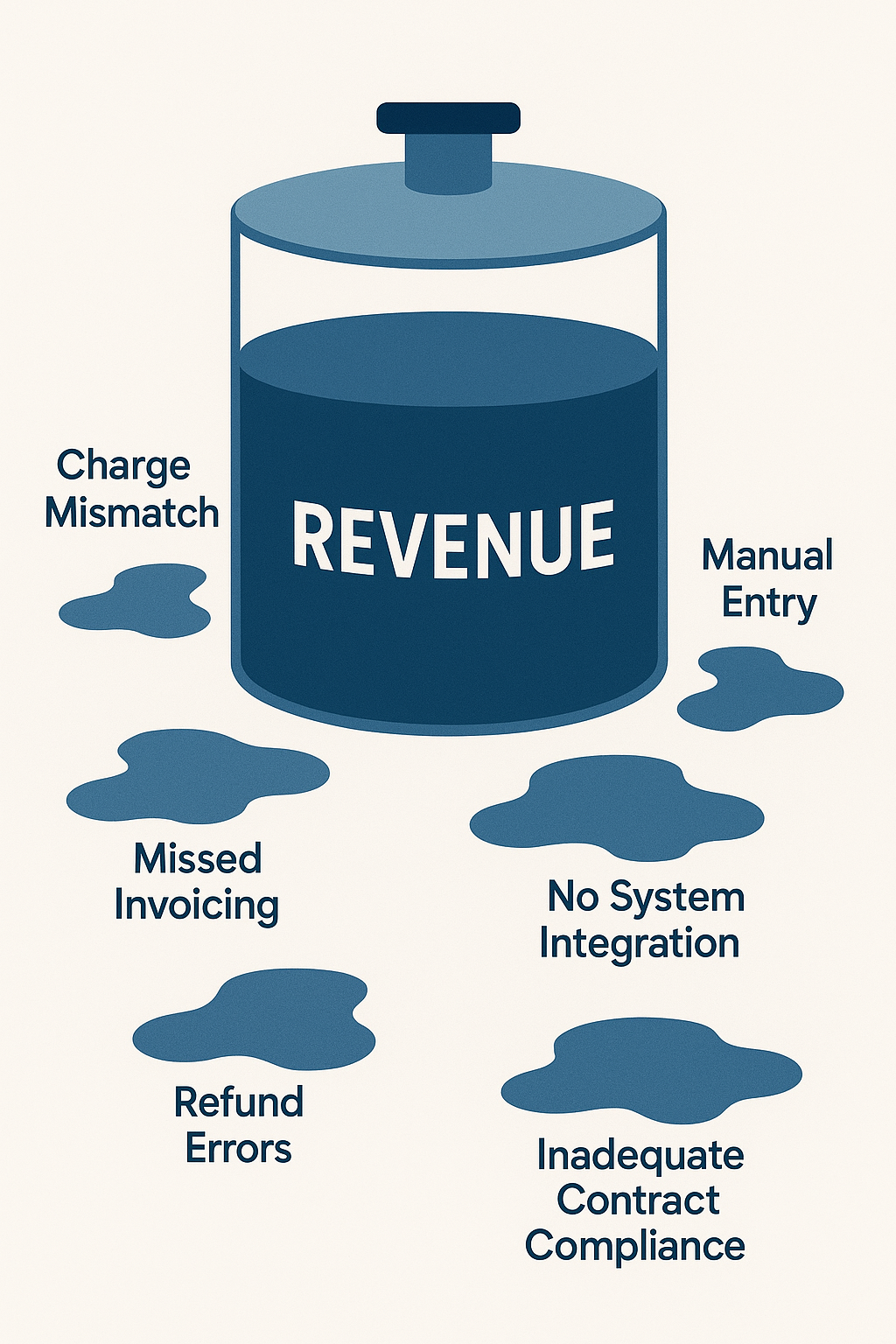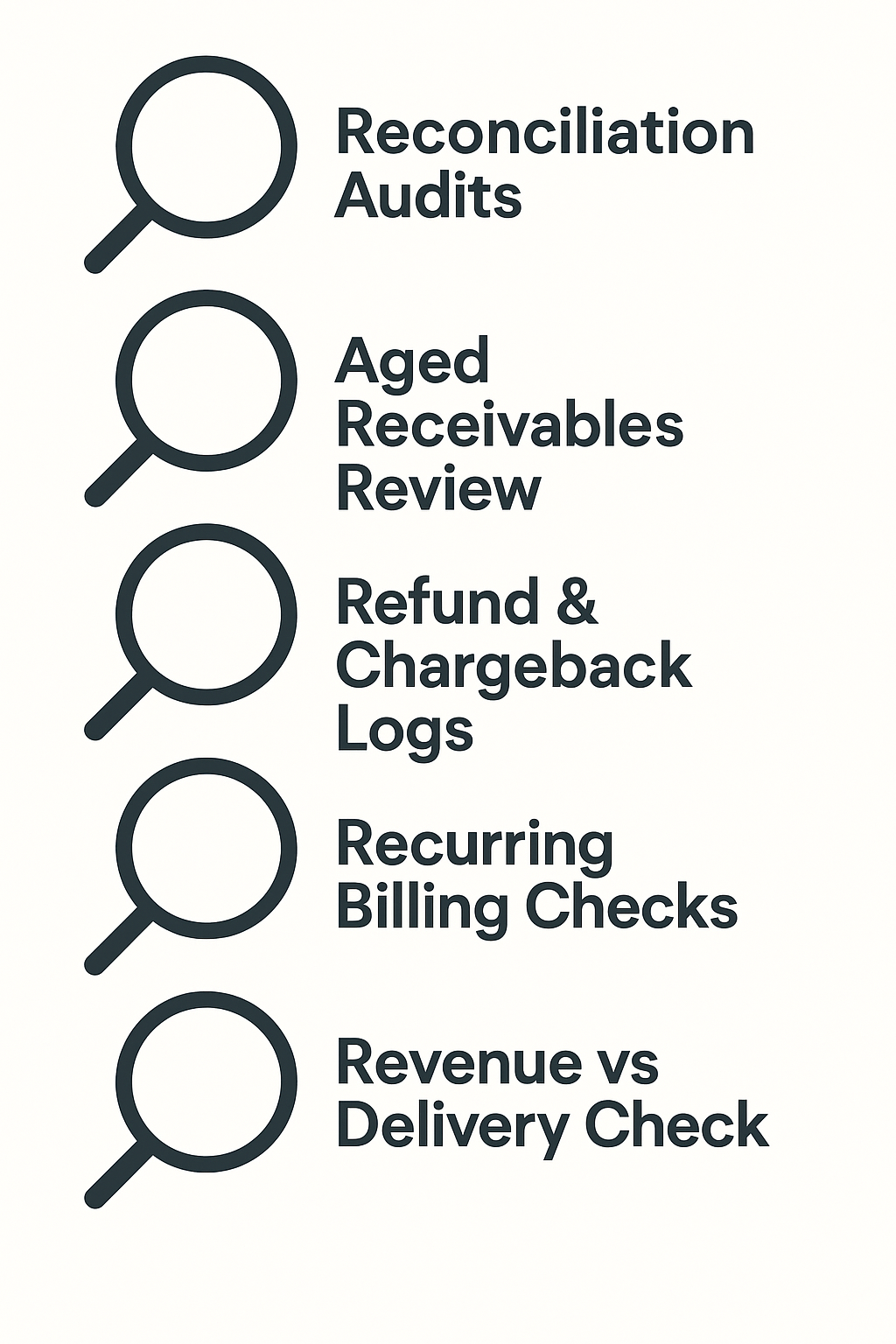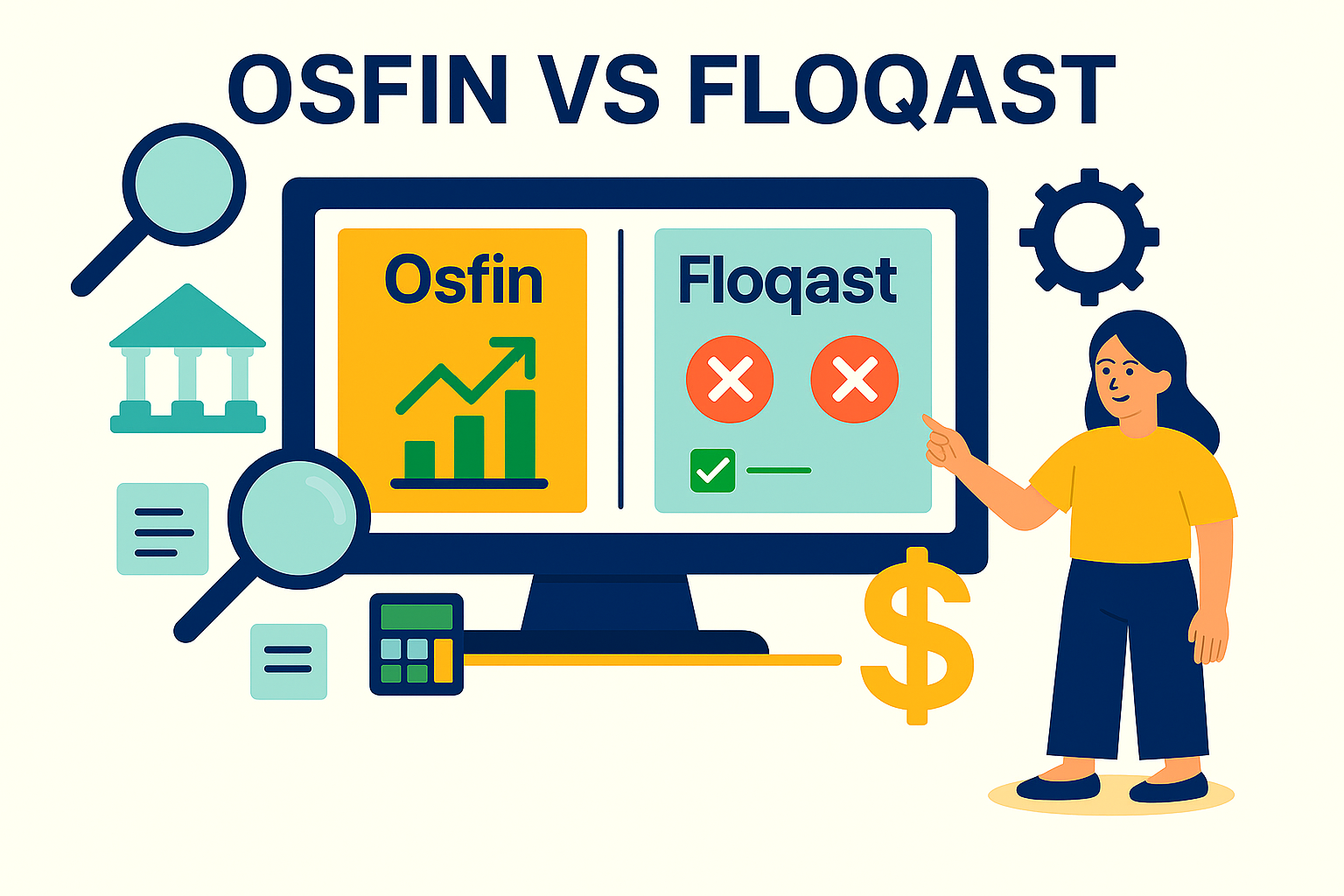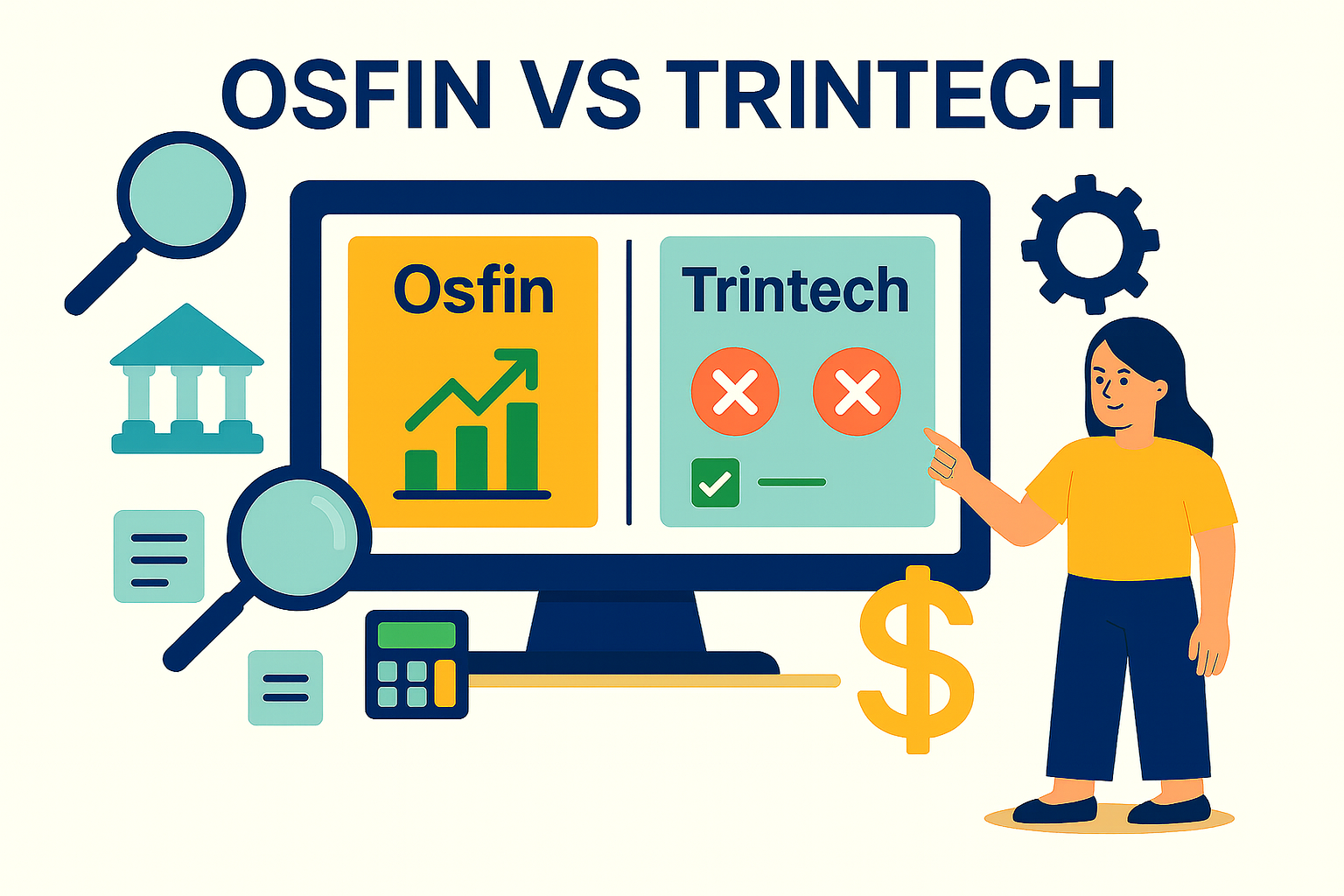How Poor Reconciliation Leads to Revenue Leakage (And How to Stop It)
According to a 2020 Boston Consulting Group survey, 45% of business leaders across various industries, including technology, industrial goods, automotive, logistics, healthcare, and travel, consider revenue leakage a systemic problem for their companies.
You could have the greatest sales funnel, the most loyal clients, and the most sophisticated billing systems. Still, you’re probably losing money without even knowing it through revenue leakages.
It may sound alarming, but revenue leakage needn't bring your company to a standstill or hinder product innovation.
One of the best ways to stay ahead of it? Reconciliation.
By regularly reconciling sales, payments, and bank balances, you can identify discrepancies early, before they accumulate into larger financial blind spots.
In this article, we'll unpack what revenue leakage is, what contributes to it, and, most importantly, how you can detect and stop it before it drains your profits through effective reconciliation.
What is Revenue Leakage?
Revenue leakage is a loss of potential income due to internal inefficiencies, mistakes, or lack of attention. It's the revenue your business should have received but didn't.
This can occur when invoices are not sent, payments fall through without a reminder, discounts are applied in error, or transactions are booked incorrectly. These little losses can slowly add up over time to have a significant financial impact, usually not immediately apparent in your ledger reconciliation.
Revenue leakage analytics involves the use of data and tools to detect and prevent lost revenue resulting from billing errors, missed charges, or process gaps. It helps businesses identify where earned revenue isn’t being collected.
Stopping revenue leakage means that what you have already brought in is tracked and collected to the fullest extent.
What this blog covers:
- What revenue leakage is and how it impacts businesses
- Common causes of leakage: billing errors, process inefficiencies, missed adjustments
- How to detect and measure leakage through analytics and controls
- Best practices to plug revenue leakage and recover lost income
- How automation and platforms like Osfin help prevent, identify, and fix revenue loss
{{banner1}}
What are the Causes of Revenue Leakage?

Causes of revenue leakage can stem from various factors-some technical, some operational, and many related to human error or outdated processes. Here, we discuss these causes with revenue leakage examples:
1. Payment Gateway Charges Mismatch
Unless properly reconciled, variance in fees, taxes, or settlements received from gateways usually go unobserved. This may range from being overcharged, deductions not being made, or unpaid payments, resulting in silent revenue leakage.
Example: On a $100 transaction, the gateway takes $3 rather than $2. That is $1 lost per transaction, which adds up quickly.
2. Manual Data Entry and Invoicing Errors
Businesses that still rely heavily on manual workflows are vulnerable to simple mistakes.
Misapplied discounts, outdated pricing, or incorrect tax calculations are frequent errors. These may appear to be minor errors at first, but across multiple transactions, they create a substantial gap between expected and actual revenue.
Example: An invoice is generated, but the amount charged is less than what's owed.
{{banner1.1}}
3. Lack of System Integration
Siloed data systems make it challenging to match payments. This increases the risk of lost or misallocated revenue. When proper reconciliation doesn’t occur and revenue leakage analytics aren't logged or tracked, mismatches arise. This distorts financial reporting, delays collections, and can even create friction with customers due to perceived non-payment.
Example: A customer pays, but due to mismatched systems, the payment isn't recorded correctly.
4. Delayed or Missed Invoicing
Sometimes, businesses forget to invoice altogether, delay issuing invoices, or issue them incorrectly. Often, the issue stems from poor handovers between departments or incomplete entries in project management systems. Without prompt and accurate billing, collection becomes difficult or impossible.
Without revenue leakage analytics with a billing trigger, the finance team never gets notified, and the revenue goes unclaimed, despite the service being fulfilled.
Example: Products or services are delivered, but no invoice is ever raised.
5. Refund Errors
When refund reconciliation requests or chargebacks are not properly reconciled, businesses risk refunding money without proper justification or, worse, refunding it twice. Duplicate refunds often occur due to uncoordinated customer service and finance workflows, or weak reconciliation protocols that fail to detect duplication.
Example: The same refund is processed more than once, or both a refund and a chargeback are issued for a single dispute.
6. Inadequate Contract Compliance
If contract terms, such as pricing, billing, or renewal schedules, aren't closely tracked, businesses may underbill or miss out on potential escalations, leaving earned revenue on the table. In subscription-based models, when auto-renewals or failed cards are not processed correctly, customers may continue accessing services without payment, sometimes for months, resulting in avoidable loss and operational costs.
Example: Billing systems fail to catch expired cards, failed transactions, or inactive users in a subscription-based business.
How to Identify Revenue Leakage?

Revenue leakage analysis involves active monitoring rather than reactive repairs. Below is how to detect it before it spirals out of control:
1. Reconciliation Audits
Compare internal books of account (such as your ERP or ledger) with external reporting like bank statements, payment gateway reports, and POS data. If there is any difference between what is received and what is expected, it’s a warning sign. Even minor discrepancies must be addressed immediately to prevent them from compounding.
{{banner2}}
2. Review Aged Receivables
Invoices that have gone unpaid for a long time may be indicative of issues below the surface. It could be a matter of forgotten follow-up, incorrect contact information, improper billing, or simply unrecorded provision of service. Checking your aging reports serves to highlight delayed collections and, more significantly, reveals patterns of leakage resulting from lapses within your revenue leakage analysis.
3. Track Refund and Chargeback Logs
Chargebacks management and refunds are typically processed by separate teams or systems, which increases the potential for duplication or overpayment. To detect leakage in this case, reconcile every refund activity with the initial sales transactions.
4. Check Recurring Billing Failures
For SaaS or subscription-based businesses, recurring billing mistakes are the leading causes of revenue leakage. Missed transactions because of expired cards or invalid billing information may pass undetected if your system doesn't send out alerts.
5. Align Revenue Recognition with Delivery
Revenue leakage analysis can be checked after two things are certain: the product or service is delivered, and payment is received or reasonably sure to be received. If your crew is booking revenue based on internal estimates rather than actual delivery information, it invites discrepancies and, on occasion, outright non-payment that goes unrecognized.
How to Stop Revenue Leakage Through Better Reconciliation?
Reconciliation is your first line of defense. When done right, reconciliation ensures:
- Every incoming payment is accounted for
- No revenue is missed or duplicated.
- Discrepancies are caught in time.
- You maintain audit readiness and data integrity.
But when reconciliation is delayed, manual, or fragmented:
- Payments go unmatched
- Refunds and chargebacks slip by
- Fraud and compliance risks increase.
- Revenue gets recorded incorrectly or not at all.
In short, poor reconciliation = hidden leakage.
Here's how you can stop revenue leakage through effective reconciliation:
1. Automate Your Reconciliation Processes
Manual reconciliation is unsustainable. Automation minimizes errors and accelerates detection.
Revenue leakage analytics with reconciliation:
- Match transactions in real-time
- Bring data from multiple sources (ERP, CRM, gateways)
- Flag exceptions for correction
2. Unite Financial Data Across Platforms
Siloed data is the most significant contributor to data leakage. Have your reconciliation software integrate with the following:
- Banks and payment gateways
- Sales systems (POS/eCommerce)
- Accounting and ERP tools
3. Utilize Exception-Based Reporting
Revenue leakage analysis combined with exception-based reporting enables finance teams to promptly identify problem areas, allowing them to take appropriate action before small gaps become significant losses.
{{banner3.1}}
4. Reconcile More Often
Shift from monthly or weekly to daily reconciliation. The sooner you catch problems, the less complicated they are to resolve.
5. Audit and Optimize
Run quarterly reconciliation audits and establish process KPIs such as:
- Days to reconcile
- % discrepancy rate
- Time to resolution
Seal the Revenue Leaks: Start Recovering with Osfin
Osfin is designed for today's finance teams that want to cut revenue leakage with smart, high-speed reconciliation and automation. It includes:
- Payment Gateway Mismatch Detection
Osfin auto-reconciles payment gateway reports with in-house records to identify fee, tax, or settlement discrepancies, reclaiming revenue lost to overcharges or missed payments.
- Fast and Accurate
Want to reconcile at scale? Osfin can match 30 million records in 15 minutes, with 100% accuracy.
- Bulletproof Security
Osfin secures your reconciliation data using 256-bit SSL encryption, supplemented with additional layers such as role-based access, two-factor authentication, and VAPT testing to enhance security further.
- Seamless Integrations
With more than 170 pre-built connectors, Osfin integrates seamlessly with your existing systems, regardless of where your data is.
- Any Data, Any Format
Excel, CSV, or custom feed – no matter the format, Osfin can process and transform it into a neat, ready-to-use format.
- Better Visibility of Unmatched Payments
Unreconciled transactions are automatically tagged, making it easy to track and resolve issues quickly.
- Smarter Exception Handling
Osfin identifies the underlying cause of mismatches and engages the correct stakeholders to address issues promptly.
- Real-Time Dashboard
One central view of all records provides your team with real-time insights and complete visibility into the reconciliation process.
- No-Code Simplicity
No IT team required. The platform is no-code and intuitive, meaning your finance team can start immediately.
- Expert Help, Always On
Our expert staff is always within reach to help you with onboarding, resolving disputes, and anything else in between.
{{banner3}}
FAQs on Revenue Leakage
1. Which industries are most impacted by revenue leakage?
SaaS, retail, telecom, and e-commerce are particularly vulnerable, as they involve high transaction volumes and utilize multi-channel or subscription-based models.
2. How frequently should businesses reconcile?
Daily reconciliation helps catch errors early, ensures faster collections, and prevents small issues from turning into major revenue losses, especially for high-volume businesses.
3. Is automation costly for reconciliation?
Not anymore. Low-code solutions, such as Osfin, make automation inexpensive and straightforward to implement, eliminating the need for IT reliance.
4. Can audits or compliance be affected by revenue leakage?
Yes. Ineffective reconciliation can trigger audit alarms, lead to penalties, and erode investor or customer confidence.
5. How can I quickly stop revenue leaks?
Begin by automating reconciliation and unifying your financial systems. This provides you instant visibility and control.


